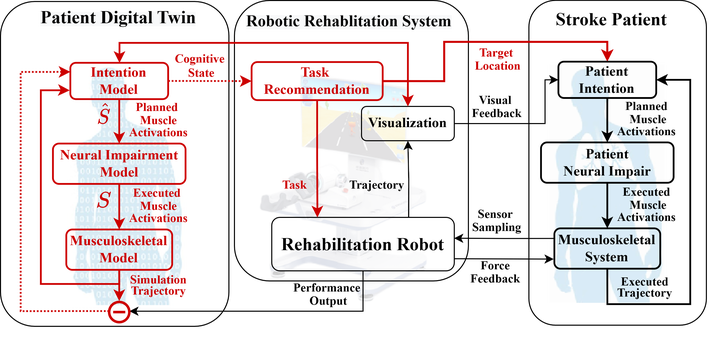Patient Evaluation during Stroke Rehabilitation

Stroke rehabilitation helps patients to regain motor control which was lost due to damages in the brain. Robotic stroke rehabilitation can reduce the burdens of the therapists and increase rehabilitation efficiency. Our team builds digital twins of the patient based on neuromusculoskeletal models. Motion trajectories and corresponding forces collected by rehabilitation robots are used for inferring possible muscle activation sequences, which can provide qualitatively and quantitatively evaluation of the patients’ dynamic and static motor control. The system can then suggest new motion targets that can further reduce uncertainties and improve the effectiveness of rehabilitations.